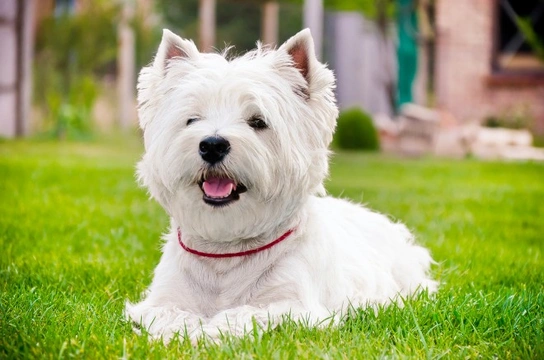
West Highland terrier longevity and hereditary health
The West Highland terrier, or West Highland white terrier, is a Scottish dog breed that is commonly referred to as the “Westie,” and is classed as a medium sized terrier but a small breed overall. Bright, inquisitive and lively little dogs, the Westie is a popular pet and companion for people of all ages, and is widely owned all across the UK, as well as in many other countries too.
The West highland terrier stands up to 11” tall at the withers and can weigh up to 20lb, with males of the breed tending to be slightly larger than females. They have deep chests, short, muscular legs and bright, almond-shaped eyes, giving them their signature alert and bright appearance.
The coat of the Westie is always white with no other colours, consisting of a rough top coat and a soft, dense and thick undercoat to provide warmth. The fur around the face grows relatively long, giving the muzzle a typically frilled appearance. The coarse top coat is often hand-stripped in adult dogs, to reveal the softer undercoat for showing.
If you are wondering if the bright, lively and fun-loving West Highland terrier is the right choice of dog for you, it is of course important to do plenty of research into the breed before committing to a purchase. This includes finding out as much as possible about the breed’s health, including their average lifespan and if the breed is prone to any hereditary health problems. We will cover these factors in more detail within this article.
West Highland terrier lifespan
The average lifespan of the West Highland terrier is 12-16 years, which provides a lot of variance across the average. Twelve years, at the bottom end of the scale, falls roundly within the average range across the board for all breeds of a similar size and build, while at the top end of the scale, reflects a much longer lifespan than the average for other small dog breeds.
Genetic diversity
The coefficient of inbreeding statistic for the West Highland terrier is 5.6%, which is below the accepted normal range for pedigree dog breeds of 6.25% or lower. This indicates that the Westie breed as a whole is not subjected to a high level of inbreeding, and that the breed as a whole is genetically diverse and robust.
Conformation
The West Highland terrier is small, compact and in proportion, and designed to work, run around and be fit and active. Their conformation is considered to be well balanced, and not subjected to ultra-typing or overtyping to a degree that this poses a threat to the breed. The Westie is robust, muscular and yet not heavy, and generally represents a fit, natural and healthy breed appearance.
Health testing for the West Highland terrier
The British Veterinary Association and The Kennel Club monitor the health of pedigree dog breeds, and make recommendations for pre-breeding health screening where this is deemed to be useful and appropriate in terms of improving the overall health and wellness of the breed.
Pre-breeding health screening for hereditary conditions that are known to be present within the breed can help breeders to make an informed decision on whether or not to breed from their dogs, and can improve the health of individual breed lines and the breed as a whole.
Currently, the following health schemes and tests are available for the West Highland terrier breed:
- Eye schemes are in place to monitor and test for hereditary cataracts, multiple ocular defects, and persistent pupillary membrane.
- DNA testing is offered for globoid cell leukodystrophy, or Krabbe disease. This is an enzyme deficiency that causes progressive symptoms of neurological problems, and ultimately proves fatal.
- DNA testing is also available for pyruvate kinase deficiency, a deficiency of a key enzyme that can lead to haemolytic anaemia.
Other health issues
As well as the known hereditary health issues listed above, the West highland terrier also has risk factors for a range of other conditions, which are either not testable or not prevalent enough across the breed to necessitate full-scale testing schemes. Such issues include:
- Hypoadrenocorticism, or Addison’s disease.
- Various types of cancers, including cutaneous histiocytoma and basal cell tumours.
- Sick sinus syndrome, a type of heart disease.
- Legg-Calve-Perthes disease, a hip joint disease that presents in young dogs, leading to lameness and severe pain.
- Westie lung disease, or pulmonary fibrosis, a persistent scarring condition of the lungs.
- Cataracts of the eyes.
- Issues with the tooth development of the lower jaw.
- Craniomandibular osteopathy, an excessive bone growth in the jaw.
- Demodicosis, a skin condition caused by a hypersensitivity to the demodex mange mite.
- Atopic dermatitis, which can be very pronounced within the Westie breed.
- Patellar luxation of the kneecaps.
- Atopy, a hypersensitivity to certain protein particles, including pollen.
- Dry eye, or keratoconjunctivitis sicca.



